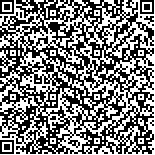| Quote
: |
程博,范婧莹,刘洁,苏芮,周芳亮,黄若茹,王贤文,何迎春.茯苓抗鼻咽癌的物质基础及潜在机制的网络药理学分析与验证[J].湖南中医药大学学报英文版,2021,41(9):1381-1388.[Click to copy
] |
|
| |
|
|
| This paper
:Browser 2019times Download 577times |
| 茯苓抗鼻咽癌的物质基础及潜在机制的网络药理学分析与验证 |
| 程博,范婧莹,刘洁,苏芮,周芳亮,黄若茹,王贤文,何迎春 |
| (湖南中医药大学, 湖南 长沙 410208;湖南省中医药防治眼耳鼻咽喉疾病与视功能保护工程技术研究中心, 湖南 长沙 410208;湖南中医药大学, 湖南 长沙 410208;中医药防治眼耳鼻咽喉疾病湖南省重点实验室, 湖南 长沙 410208;湖南省中医药防治眼耳鼻咽喉疾病与视功能保护工程技术研究中心, 湖南 长沙 410208;湖南中医药大学第一附属医院, 湖南 长沙 410208;湖南中医药大学, 湖南 长沙 410208;湖南省中医药防治眼耳鼻咽喉疾病与视功能保护工程技术研究中心, 湖南 长沙 410208;中医药防治眼耳鼻咽喉疾病湖南省重点实验室, 湖南 长沙 410208) |
| 摘要: |
| 目的 运用网络药理学预测和实验验证茯苓抗鼻咽癌的物质基础及潜在机制。方法 借助中药系统药理学数据库及分析平台和BATMAN-TCM数据库平台检索茯苓的化学成分和作用靶点。通过UniProt数据库查询靶点对应的基因,使用STRING构建共同靶点互作网络(PPI);进而运用Cytoscape 3.7.2软件构建茯苓活性成分-鼻咽癌-靶点互作网络图,通过R软件编程进行GO功能富集分析和KEGG通路富集分析,最后采用MTT和Western blot法进行验证。结果 茯苓活性成分-鼻咽癌-靶点网络包含8个活性成分,18个共同靶点,主要富集到4条通路。茯苓的主要抗鼻咽癌活性成分有茯苓酸、茯苓新酸B、常春藤皂甙等,出现频次较高的靶点有TP53、INS、ESR1、PTGS2等,这些靶点主要涉及细胞因子活性、免疫炎症系统和肿瘤细胞增殖、凋亡、迁移等生物过程,且靶点主要富集在甲状腺激素信号通路、雌激素信号通路、PI3K/AKT等信号通路。MTT结果显示,与对照组比较,茯苓酸组(2.5、5.0、10 μmol·L-1)对CNE2细胞增殖具有明显抑制作用(P<0.05或P<0.01)。Western blot结果显示,药物处理24 h后,与对照组比,茯苓酸组(5.0 μmol·L-1)降低了CNE2细胞PI3K/AKT信号通路关键蛋白PI3K、p-AKT的表达水平(P<0.05或P<0.01),对AKT的表达无明显差异性(P>0.05)。结论 茯苓可通过多成分、多靶点和多通路影响鼻咽癌细胞的增殖。且经实验验证,茯苓抑制鼻咽癌细胞增殖的作用与抑制PI3K/AKT信号通路的活性相关。 |
| 关键词: 网络药理学 茯苓 鼻咽癌 分子机制 |
| DOI:10.3969/j.issn.1674-070X.2021.09.012 |
| Received:June 22, 2021 |
| 基金项目:国家自然科学基金项目(81973914,81874408);湖南省中医药管理局项目(2021014,2021174,2021184);湖南省研究生创新课题(CX20200794);湖南省大学生创新课题(S202010541020)。 |
|
| Network Pharmacology Analysis and Verification of the Material Basis and Potential Mechanism of Fuling (Poria) Against Nasopharyngeal Carcinoma |
| CHENG Bo,FAN Jingying,LIU Jie,SU Rui,ZHOU Fangliang,HUANG Ruoru,WANG Xianwen,HE Yingchun |
| (Hunan University of Chinese Medicine, Changsha, Hunan 410208, China;Hunan Provincial Ophthalmology and Otolaryngology Diseases Prevention and Treatment with Traditional Chinese Medicine and Visual Function Protection Engineering and Technological Research Center, Changsha, Hunan 410208, China;Hunan University of Chinese Medicine, Changsha, Hunan 410208, China;Hunan Provincial Key Laboratory for the Prevention and Treatment of Ophthalmology and Otolaryngology Diseases with Traditional Chinese Medicine, Changsha, Hunan 410208, China;Hunan Provincial Ophthalmology and Otolaryngology Diseases Prevention and Treatment with Traditional Chinese Medicine and Visual Function Protection Engineering and Technological Research Center, Changsha, Hunan 410208, China;The First Affiliated Hospital of Hunan University of Chinese Medicine, Changsha, Hunan 410208, China;Hunan University of Chinese Medicine, Changsha, Hunan 410208, China;Hunan Provincial Ophthalmology and Otolaryngology Diseases Prevention and Treatment with Traditional Chinese Medicine and Visual Function Protection Engineering and Technological Research Center, Changsha, Hunan 410208, China;Hunan Provincial Key Laboratory for the Prevention and Treatment of Ophthalmology and Otolaryngology Diseases with Traditional Chinese Medicine, Changsha, Hunan 410208, China) |
| Abstract: |
| Objective To verify the material basis and potential mechanism of Fuling (Poria) against nasopharyngeal carcinoma by network pharmacology prediction and experiment. Methods The chemical constituents and targets of Fuling (Poria) were searched by traditional Chinese medicine system pharmacology (TCMSP) database and BATMAN-TCM database. UniProt database was used to query the genes corresponding to the target, and STRING was used to construct the common target interaction network (PPI). The PPI of Fuling (Poria) active ingredient-nasopharyngal carcinoma-target was constructed by using Cytoscape 3.7.2 software. GO function enrichment analysis and KEGG pathway enrichment analysis were carried out by R software programming. Finally, MTT and Western blot were used to verify the results. Results Fuling (Poria) active component-nasopharyngeal carcinoma-target network contained 8 active components and 18 common targets, mainly enriched into 4 pathways. The main anti nasopharyngeal carcinoma active components Fuling (Poria) were pachymenic acid, pachymenic acid B, ivy saponins, etc. The high frequency targets were TP53, INS, ESR1, PTGS2, etc. These targets were mainly related to cytokine activity, immune inflammatory system, tumor angiogenesis, tumor cell proliferation, apoptosis, migration, etc. These targets were mainly enriched in thyroid hormone signaling pathway, estrogen signaling pathway, PI3K/AKT signaling pathway, etc. MTT results showed that compared with the control group, the proliferation of CNE2 cells was significantly inhibited in Fuling (Poria) groups (2.5, 5.0, 10 μmol·L-1) (P<0.05 or P<0.01). Western blot results showed that compared with control group, Fuling (Poria) group (5.0 μmol·L-1) decreased the expression levels of PI3K and p-AKT, the key proteins of PI3K/AKT signaling pathway in CNE2 cells after treated for 24 hours (P<0.05 or P<0.01), but there was no significant difference in the expression of AKT(P>0.05). Conclusion Fuling (Poria) can affect the proliferation of nasopharyngeal carcinoma cells through multiple components, multiple targets and multiple pathways. It was confirmed that the inhibitory effect of Fuling (Poria) on nasopharyngeal carcinoma cells proliferation was related to the inhibition of PI3K/AKT signaling pathway. |
| Key words: network pharmacology Fuling (Poria) nasopharyngeal carcinoma molecular mechanism |
|

二维码(扫一下试试看!) |
|
|
|
|


